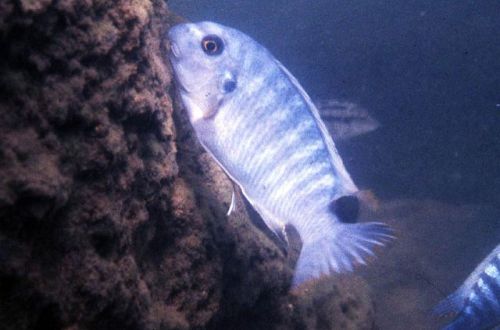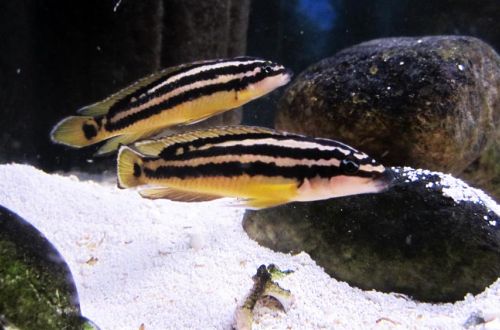
Royal tetra
The Imperial or Royal Tetra, scientific name Nematobrycon palmeri, belongs to the Characidae family. This species is widely popular due to its original coloration, excellent compatibility with other fish, unpretentiousness, endurance and, as a result, low maintenance costs.

Contents
Habitat
Endemic to the San Juan (Spanish Río San Juan) and Atrato (Spanish Atrato) river basins, in northwestern Colombia on the South American continent. It lives in numerous streams, small tributaries and slow-flowing backwaters flowing in the shade of dense tropical forest.
In the recent past, wild-caught specimens have been widely traded, but these have become much less common in recent years due to advances in commercial breeding.
Brief information:
- The volume of the aquarium – from 60 liters.
- Temperature – 23-27°C
- Value pH — 5.0–7.5
- Water hardness – soft (1-12 dGH)
- Substrate type – any sandy
- Lighting – subdued
- Brackish water – no
- Water movement is weak
- The size of the fish is up to 4 cm.
- Food – any food
- Temperament – peaceful
- Keeping in a flock of at least 10 individuals
Description
Adults reach a modest 4 cm in length. Males are larger and more colorful, in natural conditions (muffled light and floating plants) purple and blue appear in color, caudal and anal fins are enlarged in comparison with females. In bright light, the color fades and becomes yellowish.
Food
They accept all types of dry, frozen and live food. A varied diet that combines different foods (such as dry flakes with bloodworms or daphnia) promotes the development of bright colors in the coloration and improves the tone of the fish. Conversely, monotonous food, consisting exclusively of cheap packaged food, will negatively affect the appearance and well-being of your aquatic pets.
Maintenance and care, arrangement of the aquarium
For a small group of fish, a tank of 60 liters or more will be required. The design uses sandy soil with shelters in the form of snags, roots or branches of trees, several shade-loving rooting and floating plants. The equipment is adjusted in such a way as to provide subdued diffused light and very low flow.
Water conditions have fairly wide tolerances and range from slightly acidic to neutral pH values with mild to medium carbonate hardness (dGH). It is recommended to use a filter with a peat-based filter material, which, in addition to its main function, also saturates the water with substances present in its natural habitat.
Maintenance is reduced to a weekly replacement of part of the water (15–20%) with fresh and regular cleaning of the soil from organic waste (food debris, excrement, etc.).
Behavior and Compatibility
A calm peaceful species, it goes well with many other popular fish of similar size and temperament. The content is flocking, at least 10 individuals of both sexes. Males compete with each other for the attention of females, the main means of struggle is coloration, not skirmishes, so there are no intraspecific conflicts.
Be very careful when selecting species that are significantly larger than the Royal Tetra. It is possible that it can become their snack.
Breeding / breeding
Easy to breed at home. Fry may appear in the general aquarium, but their survival rate will be at an extremely low level due to the tendency of adult fish to eat their own offspring. Breeding is recommended to be carried out in a separate tank with a volume of 20 liters or more with very dim lighting. Fill with water from the community aquarium. In order to protect the eggs, thickets of small-leaved low-growing plants or mosses / ferns, or a fine mesh or a layer of balls with a diameter of 1 cm or more are placed on the bottom. A heater and a simple airlift filter are sufficient from the equipment.
The impetus for the beginning of the mating season is a gradual change in water conditions. The pH parameters are set at 6.0–7.0, dGH must not exceed 10, the temperature rises to a maximum allowable value of 26–27°C. The diet includes a large amount of live food (small crustaceans, insect larvae, etc.). After some time, the females become noticeably rounder, and the males become noticeably brighter and begin to show “signs of attention” to their chosen ones.
Females and several of the largest and strongest males are placed in a separate tank. At the end of spawning, they are returned back.
The fry appear after 24-36 hours, and already on the 4th-5th day they begin to swim freely in search of food. Feed with specialized food for juvenile aquarium fish.
Professional breeders use a slightly different breeding technique. During the mating season, females and males are transplanted into separate aquariums. For spawning, a pair of the healthiest and largest fish is selected and placed together in a hotel tank. If it was not possible to get caviar, they try with another pair. This technique allows you to control from which specific fish the offspring originated, thereby carrying out effective selection and preventing further inbreeding.
Fish diseases
A balanced aquarium biosystem with suitable conditions is the best guarantee against the occurrence of any diseases, therefore, if the fish has changed behavior, color, unusual spots and other symptoms appear, first check the water parameters, and only then proceed to treatment.





